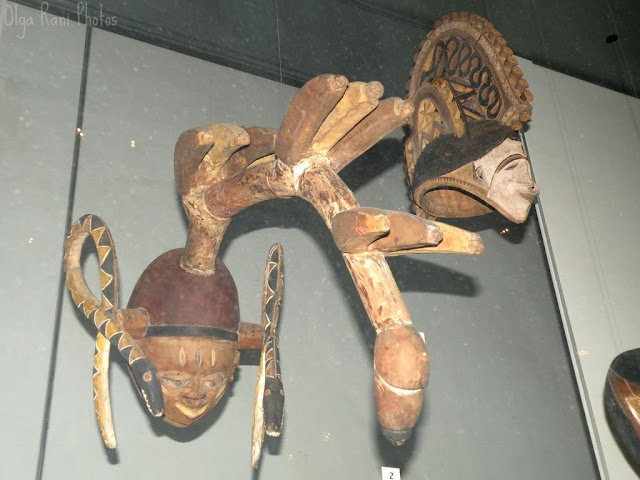The British and the Horniman museums has quite an interesting and impressive collection of African mask. After seeing it I wanted to know more about this form of ancient art. Originally the masks had a specific purpose and were much more than decorative objects. Masks can represent spirits, animals or mythological beings. Sometimes people wear masks with a costume as part of a ritual or performance. The purpose of a mask is not only to conceal the identity of the wearer, it actually creates a new identity - one from the spirit world. Many Africans use masks in private initiations, in the rituals of secret societies and in coming of age ceremonies. People use masks in public ceremonies such as funerals, harvest celebrations, acts of thanksgiving and in other rituals.
Wood is the most common material used for making African masks. Most of the masks available for study are no more than 100 years old because wood rarely lasts longer than that in a tropical climate. Besides wood, masks can be made of ivory, metals and beads. Sometimes the mask maker might further decorate the mask by painting it or attaching other materials such as feathers, horns or fibre to it.
The shape of a mask is traditional and not subject to the stylistic taste of its maker. A design that had evidently pleased the spirits in the past is usually followed carefully. Though a new mask might be inspired by an image seen in a dream.
African masks can be designed to cover the head, just the face or be used as a headdress that is attached to the top of the head. They can be gigantic or very small. The large and life-size masks are used in public performances and private rituals. The small masks are used as charms or amulets to cure illness and to offer protection during work or travel.
The features on a mask can be human, animal or a combination of the two. The expressions range from terrifying to serene.
Mask or Yaka people, Kongo. Wood, vegetable fibre, resin, pigment.
Masks of this type are worn by youths at the end of circumcision festival. Sometimes they are made by the youths themselves and show great inventiveness.
Masks of Songye people, Kongo, 19c
Wood, fur, raphia, pigment.
Mask of Songhay people, Kongo
Mask of Kuba people, Kongo
Wood, beads, shells, pigment
Mask of Makonde people, Mosambique,19c
Wood, hair, wax, pigment
The marks on the face reproduce the scarification typical of Makonde in the earlier times.
Masks of Yuruba people, Nigeria, 19c
Wood, pigment
Such masks are performed by men but depict women. Costmes often include false bottoms and breasts.
Mask of Angas people, Nigeria, 20c
Vegetable fibre, hair, red abrus seeds










These are amazing!
ReplyDelete